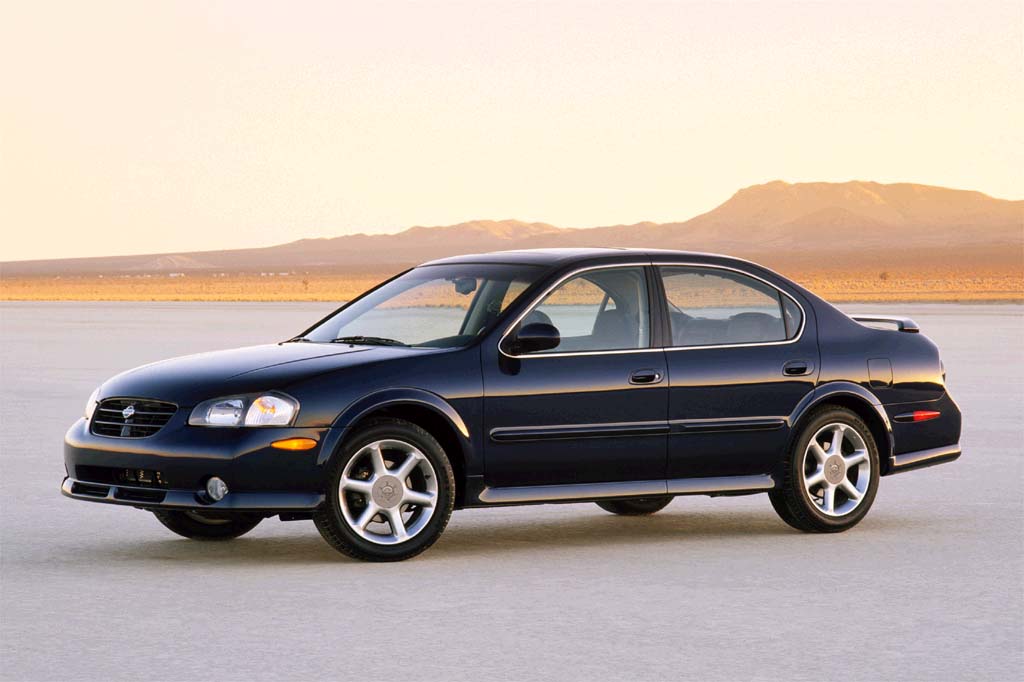| Midsize car; Built in Japan |
|
|
| Good condition price range: $3,000 – $6,600* |

2000 Nissan Maxima SE

2000 Nissan Maxima SE

2001 Nissan Maxima interior

2001 Nissan Maxima GXE

2001 Nissan Maxima SE
| Pros: |
|
| Cons: |
|
Quiet and athletic, the Maxima offers an appealing blend of performance, handling, and ride comfort, with refinement and amenities approaching the near-luxury class. Nissan’s top sedan fares well against such tough adversaries as the Honda Accord and Toyota Camry.
Overview
Introduced in spring 1999, the redesigned Maxima displayed dramatically revised styling along with more power and additional features. An extra 2 inches added to the wheelbase yielded slightly more interior and trunk volume. Under the hood once again was a 3.0-liter V6, but packing 32 more horsepower than before–raised to 222. The new model had a 100,000-mile maintenance interval, too. Three versions went on sale: base GXE and sporty SE with a 5-speed manual or extra-cost 4-speed automatic transmission, and top-line GLE with automatic. Antilock braking was standard, and front side airbags were newly optional. Traction control was an option only for the SE and GLE. Sporty extras on the SE included a rear spoiler and a firmer suspension, with the option of 17-inch wheels. Otherwise, 16-inch tires were standard on the SE and GLE and optional on the GXE, which came with standard 15-inch rubber. Leather upholstery was standard in the GLE, optional in the SE. An antitheft engine immobilizer was part of the standard remote keyless-entry system.
Yearly Updates
| 2001 Maxima A special 20th Anniversary model debuted this year, equipped with the same 227-horsepower version of the V6 that was used in the Infiniti I30. The 20th Anniversary Maxima was essentially an SE with Leather Trim and Comfort & Convenience options, including 17-inch wheels, a limited-slip differential, bronze-finish headlamp lenses, lower-body “aero” components, and aluminum trim. Front side airbags now were part of a new Meridian Edition option package, which also included heated seats. Steering-wheel audio controls were standard on the SE and GLE, optional for the GXE. |
| 2002 Maxima ’02 Maximas got a 255-hp 3.5-liter V6 with 33 hp more than the 3.0 it replaced. A new 6-speed manual transmission and moderately revised styling were the other significant changes this year. |
| 2003 Maxima Front side airbags become standard for the GLE; they remained optional for SE and unavailable on GXE. A new Titanium Edition Package for SEs included the front side airbags, plus premium Bose audio with in-dash CD changer, compass, special wheels, titanium-colored interior trim, and available polished Titanium paint. Maxima was redesigned for ’04. |
| 2004 Maxima There were no changes for the Maxima in 2004. |
